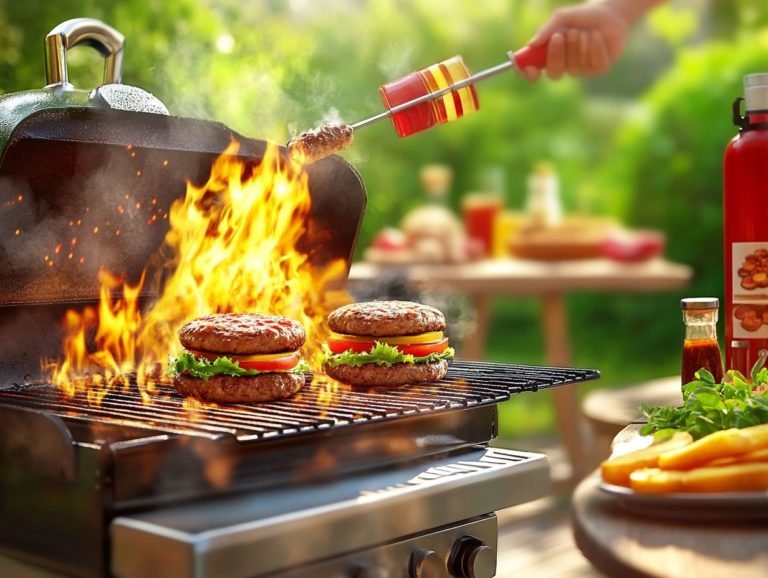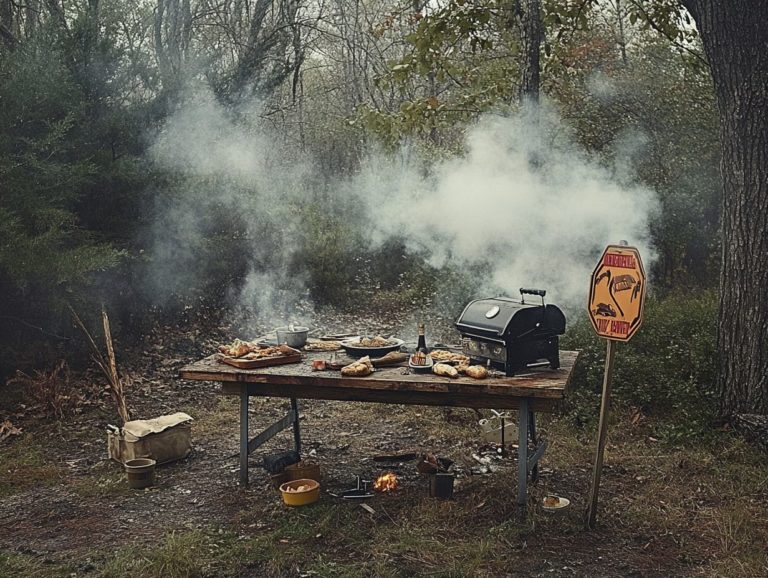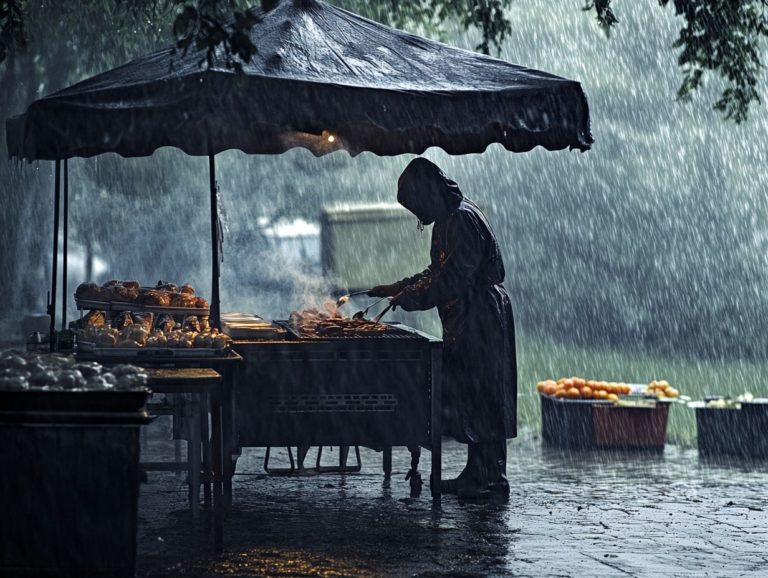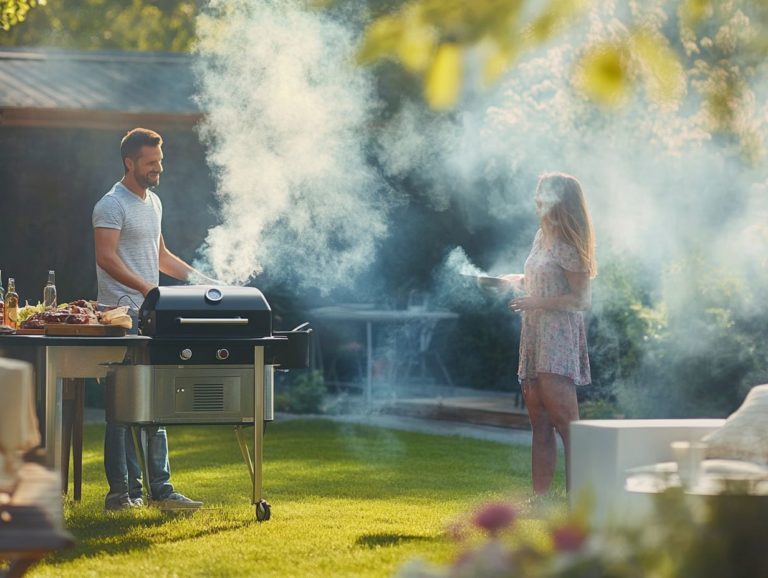Safety Tips for Cooking on Elevated Surfaces
Cooking on elevated surfaces may seem convenient, but it carries its own unique risks. From potential hazards to accidents, it s crucial for you to grasp the dangers involved and learn how to mitigate them effectively.
This article offers practical safety measures to follow before cooking. You will also find tips for handling hot objects and emergency procedures if something goes wrong. Explore safer alternatives to cooking on high surfaces as well.
Elevate your kitchen safety knowledge and ensure a more secure cooking environment!
Contents
- Key Takeaways:
- The Risks of Cooking on Elevated Surfaces
- Safety Measures Before Cooking
- Safe Practices While Cooking
- Emergency Procedures
- Alternatives to Cooking on Elevated Surfaces
- Frequently Asked Questions
- What are some safety tips for cooking on elevated surfaces?
- Why is it important to use a step stool or ladder when cooking on elevated surfaces?
- How can I make sure the elevated surface is strong enough to support my cooking equipment?
- What should I do if I accidentally start a fire while cooking on an elevated surface?
- How can I prevent heat damage to the elevated surface?
- Is it safe to leave my cooking unattended on an elevated surface?
Key Takeaways:
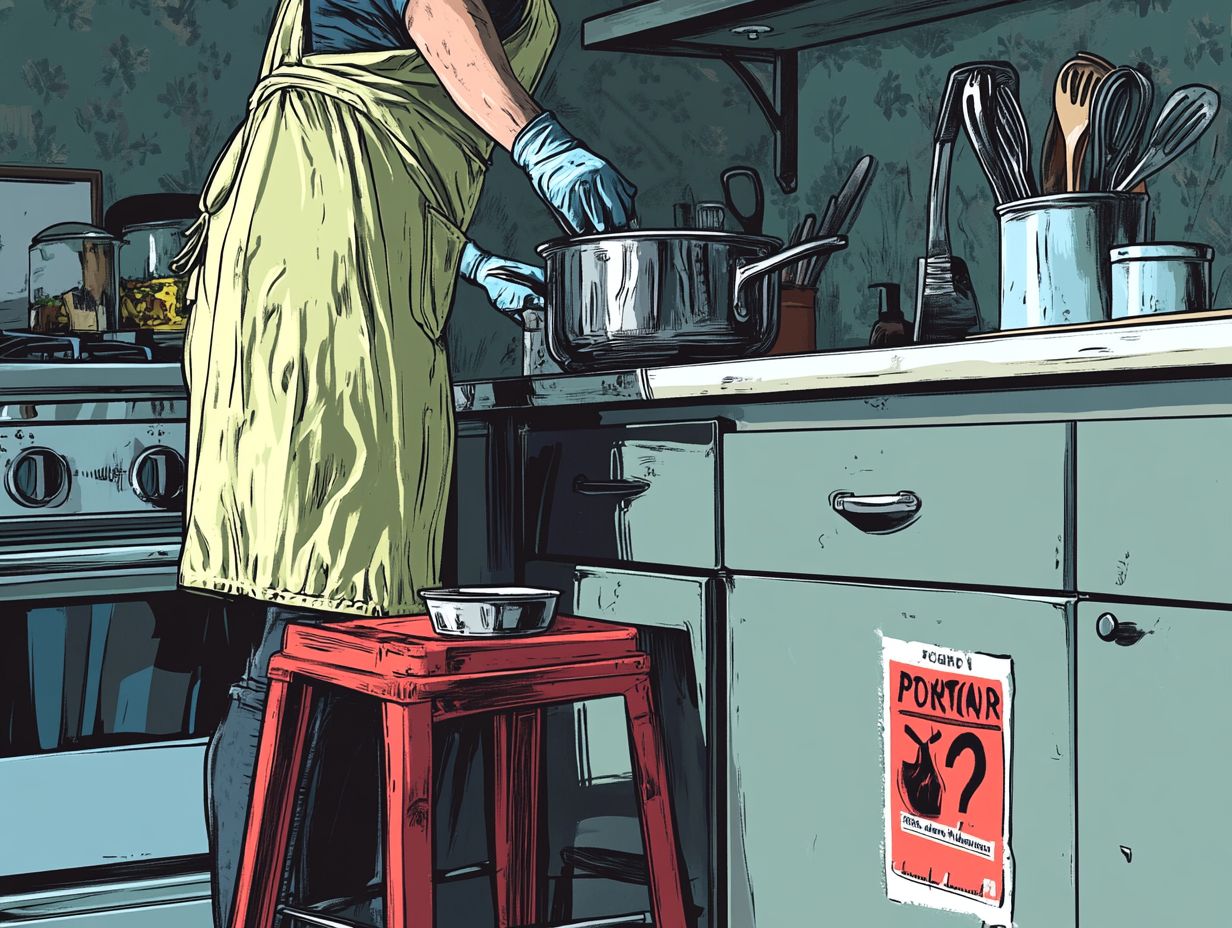
Inspect the surface and equipment for safety before cooking.
Handle hot objects carefully, and stay focused to prevent accidents.
Know emergency procedures to follow in case of an accident.
The Risks of Cooking on Elevated Surfaces
Cooking on elevated surfaces comes with a range of risks that can seriously impact kitchen safety. To mitigate these hazards, it’s important to follow safety tips for cooking with open flames outdoors, as the potential for falls, burns, and injuries from sharp objects can increase significantly in these areas.
It can be challenging to keep control of your cooking equipment and utensils. This may lead to accidents that could harm both adults and children. Neglecting proper food safety techniques, like proper cooking and storage of food, helps prevent illness. This increases the risk of food poisoning, creating an environment that isn’t ideal for safe cooking.
Being aware of these hazards is crucial for maintaining a secure cooking space and ensuring the well-being of everyone in the kitchen.
Potential Hazards and Accidents
In the kitchen, you might encounter potential hazards and accidents from various sources, especially when cooking on elevated surfaces. Unstable counters or stools can increase the risk of falls, so it s wise to maintain a stable footing and avoid overreaching.
Hot appliances, like ovens and stovetops, present a significant burn risk if you don t take proper precautions. Always remember to use oven mitts and keep pot handles turned inward to minimize danger. Sharp utensils are essential for meal preparation, but they can lead to injuries if not handled with care.
It s advisable to keep knife sets out of reach of children and to cut on secure, non-slip surfaces.
By implementing these prevention strategies, you can greatly enhance safety in the kitchen. This ensures a more enjoyable and worry-free cooking experience.
Safety Measures Before Cooking
Before you embark on any cooking activity, it s essential to establish safety measures that prioritize kitchen safety, hygiene, and efficient food storage. Ensuring your cooking environment is pristine and devoid of hazards is vital. This means utilizing the right cleaning supplies and securely organizing your cooking tools.
Moreover, keeping sharp objects and hot appliances out of reach is a smart way to safeguard children and prevent mishaps in the kitchen. A well-prepared workspace not only elevates your cooking experience but also dramatically lowers the risk of injuries and food contamination.
Inspecting the Surface and Equipment

Inspecting the surfaces and equipment in your kitchen is an essential step in ensuring safety and minimizing the risk of accidents. A clean and stable cooking environment not only elevates the quality of your food but also shields you from potential hazards.
Take a moment to check your countertops for any unevenness or debris that could lead to slips or spills while you prepare your meals. It s equally important to ensure that your cooking equipment, like stoves and ovens, is in impeccable working condition to prevent any mishaps during food preparation. The presence and proper use of cleaning supplies also play a critical role in maintaining this safe environment, keeping harmful bacteria at bay and ensuring that surfaces remain sanitary.
By prioritizing these checks, you can create a cooking experience that is not only secure but also more enjoyable.
Safe Practices While Cooking
In the kitchen, prioritizing safe practices is essential for maintaining a secure cooking environment. This is particularly important when dealing with hot objects and sharp utensils.
Choose the right clothing, like non-flammable fabrics. Use heat-proof gloves to minimize the risk of burns. Additionally, handle sharp tools, such as knives, with care to prevent accidents.
Follow food safety protocols to ensure every meal is prepared hygienically. This safeguards the well-being of everyone in your home by avoiding cross-contamination.
Proper Handling of Hot Objects
Properly handling hot objects is essential for your burn safety in the kitchen. It allows you to cook with confidence and without the fear of injury.
Use heat-proof gloves when transferring hot pots and pans. Tongs or silicone utensils are specifically designed for handling heated items. These tools provide a secure grip and protect your skin from high temperatures, significantly reducing the chances of painful burns.
Always remember to keep pot handles turned inward on the stove. This prevents accidental spills or scalds.
By knowing how to use equipment like oven mitts and heat-resistant mats, you enhance your safety in meal preparation. This paves the way for a more enjoyable cooking experience.
Staying Alert and Focused
Staying vigilant and focused while cooking is essential for ensuring kitchen safety. This helps minimize the risk of accidents and maintain proper food safety to avoid issues like salmonella and other foodborne illnesses.
In a bustling kitchen, the temptation to multitask can be strong. However, this often leads to oversights and potential hazards, especially when children are involved. Distractions from phones, lively conversations, or even an engaging television show can easily draw your attention away from hot surfaces or sharp utensils.
To counteract these dangers, establish clear kitchen rules. Set specific times for children to assist or observe, allowing them to engage safely while you remain attentive.
Keep essential tools within easy reach. Practicing mise en place having everything in its place before you start cooking will further enhance your focus and efficiency, reinforcing food safety standards throughout your cooking experience.
Emergency Procedures
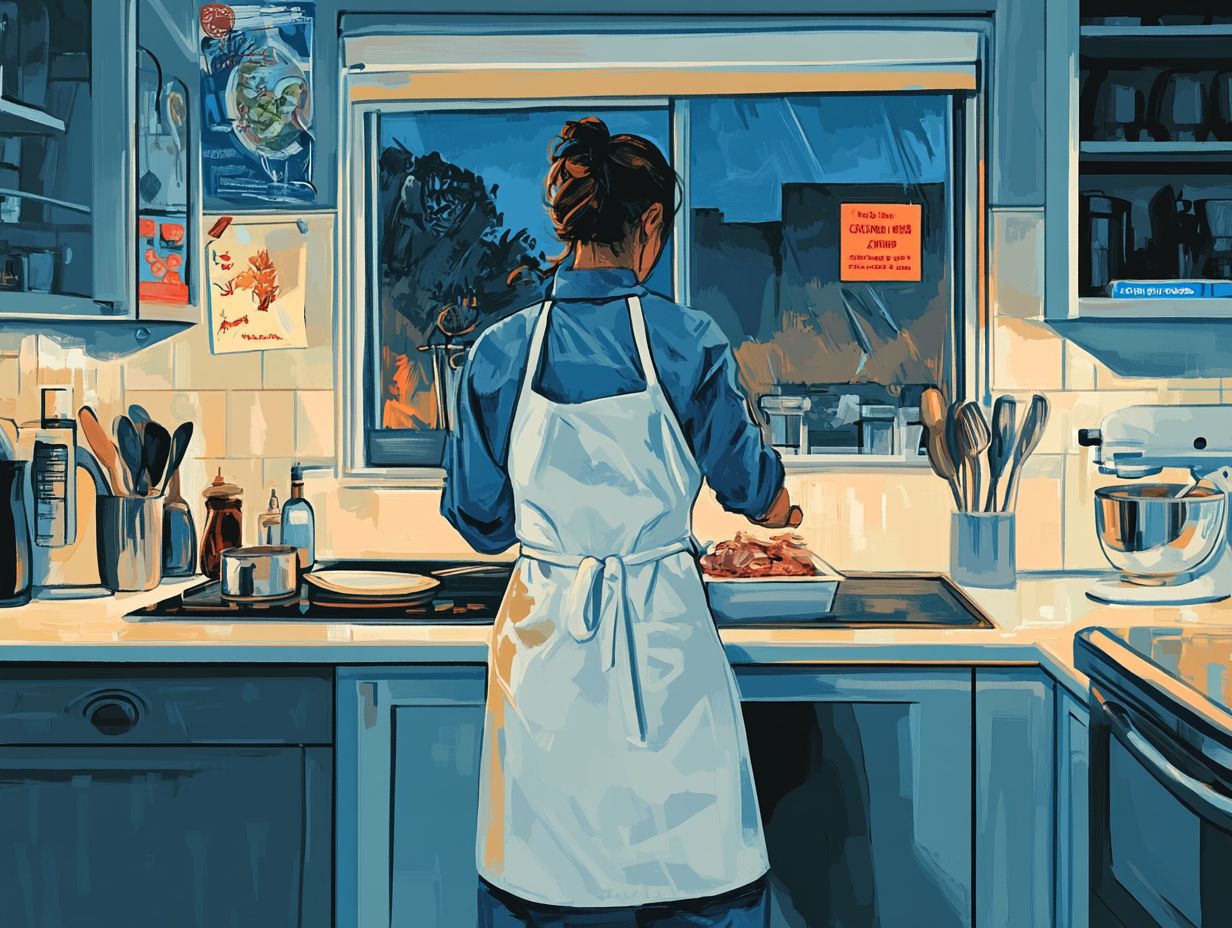
Understanding emergency procedures in the kitchen is essential for ensuring safety and managing potential accidents with confidence. Know first aid techniques for burns and injuries. This knowledge minimizes harm and allows for immediate care.
Ensure you have a fire extinguisher on hand. It can make the difference between a small flare-up and a full-blown catastrophe. Regularly review emergency procedures for common kitchen accidents. This enables you and those around you to handle unexpected situations with composure and effectiveness.
How to React in Case of Accidents
Understanding how to respond in the event of an accident is paramount for ensuring kitchen safety. Your immediate and informed action can dramatically influence the outcome.
If someone suffers a burn from hot oil or steam, know to run cool water over the affected area for at least 20 minutes. This can significantly lessen damage and alleviate pain.
In the case of cuts from sharp utensils, applying pressure to stem any bleeding is crucial. For more serious injuries, seeking medical attention becomes essential.
The threat of kitchen fires cannot be underestimated. Keeping a fire extinguisher within reach and knowing how to use it enhances safety significantly. Having cleaning supplies ready for quick spill management is also important.
Preparation and timely responses can transform your cooking environment into a much safer space for everyone involved.
Alternatives to Cooking on Elevated Surfaces
Exploring alternatives to cooking on elevated surfaces can greatly enhance your kitchen safety while improving your overall culinary experience.
Choosing lower surfaces boosts your kitchen safety! By opting for lower surfaces or specially designed cooking equipment, you can minimize the risk of falls and accidents. These alternatives promote better food safety practices, allowing for easier access to essential kitchen appliances and tools.
Understanding various cooking options helps you create a kitchen environment that is both safe and efficient.
Exploring Other Cooking Options
Exploring alternative cooking methods can significantly enhance your kitchen safety and elevate your food preparation practices, especially in terms of cleaning and maintaining a safe cooking environment.
By using countertop appliances like slow cookers and air fryers, you create a more accessible and organized workspace. These options reduce the risk of accidents associated with elevated surfaces while streamlining your cooking experience.
Utilizing stovetops for quick meals or portable cooking equipment for outdoor gatherings adds versatility to your cooking options without compromising safety.
Prioritizing food safety practices such as maintaining proper temperature control and ensuring clean surfaces allows you to enjoy delicious meals with confidence. You can immerse yourself in the joy of cooking without worrying about potential risks.
Frequently Asked Questions
Here are some frequently asked questions regarding cooking on elevated surfaces. These essential tips for outdoor cooking can help you stay safe and enjoy your culinary adventures!
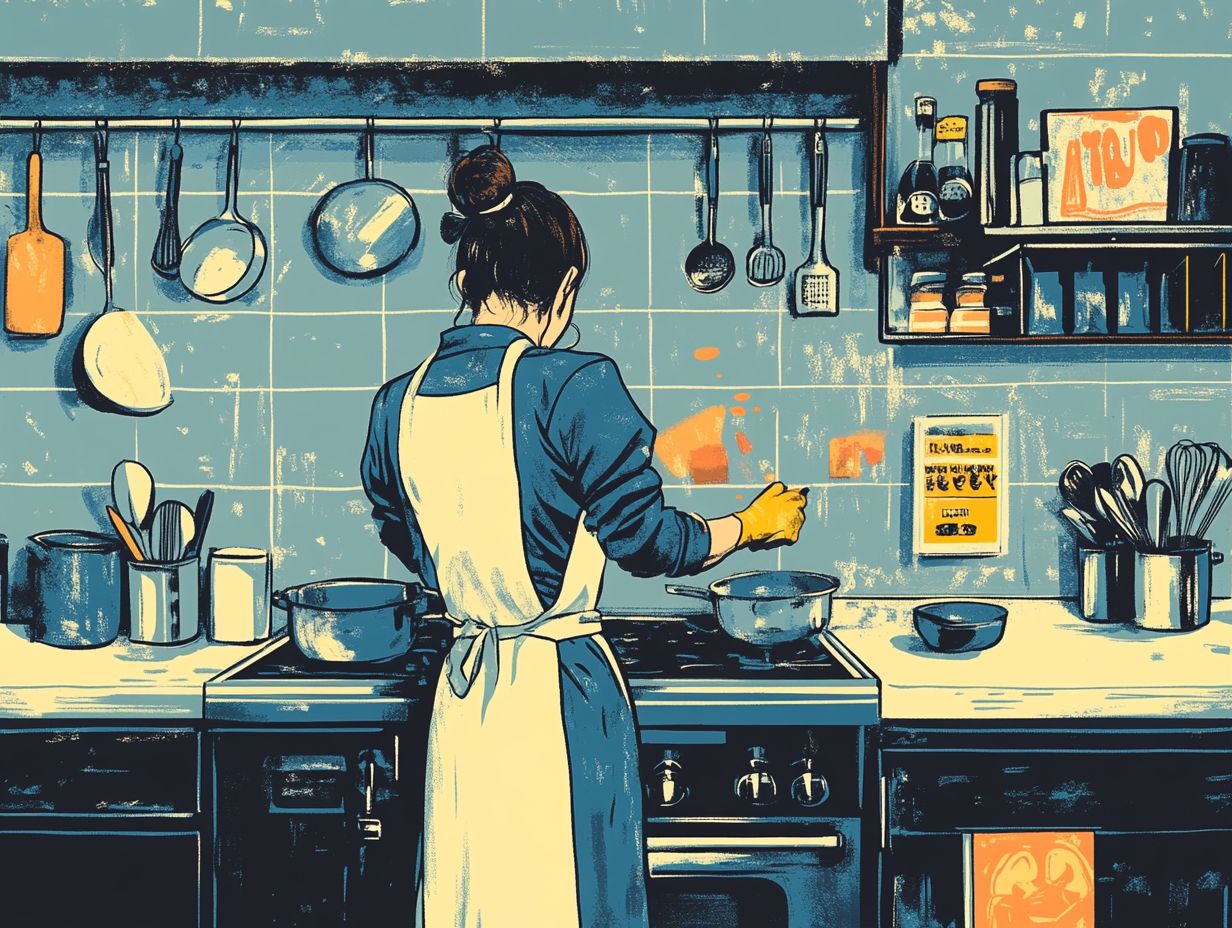
What are some safety tips for cooking on elevated surfaces?
- Always ensure the surface is sturdy and can support the weight of your cooking equipment.
- Use a step stool or ladder to safely reach the elevated surface.
- Keep the cooking area clear of any clutter or obstacles.
- Have a fire extinguisher nearby in case of any accidents.
- Use a heat-resistant mat or trivet to protect the elevated surface from heat damage.
- Never leave your cooking unattended on an elevated surface.
Why is it important to use a step stool or ladder when cooking on elevated surfaces?
Using a stable and secure step stool or ladder ensures your safety when reaching an elevated surface. Standing on chairs or other unstable objects can lead to falls and injuries.
How can I make sure the elevated surface is strong enough to support my cooking equipment?
Before using an elevated surface for cooking, check its weight capacity to ensure it can handle the weight of your equipment. For more guidance, consider these safety tips for cooking on a budget outdoors. If unsure, choose a different surface or move your cooking to a lower, more stable area.
What should I do if I accidentally start a fire while cooking on an elevated surface?
If a fire starts, turn off the heat source and cover the pan with a lid to smother the flames. Never use water to extinguish a grease fire. If the fire cannot be contained, call emergency services immediately.
How can I prevent heat damage to the elevated surface?
To avoid damaging the surface due to heat, use a heat-resistant mat or trivet. This will also prevent any potential burns or scorch marks on the surface.
Is it safe to leave my cooking unattended on an elevated surface?
No, it is not safe to leave cooking unattended on an elevated surface. Always keep an eye on your cooking to prevent any accidents or emergencies.
Do you have your own cooking tips or questions? Feel free to share them!

